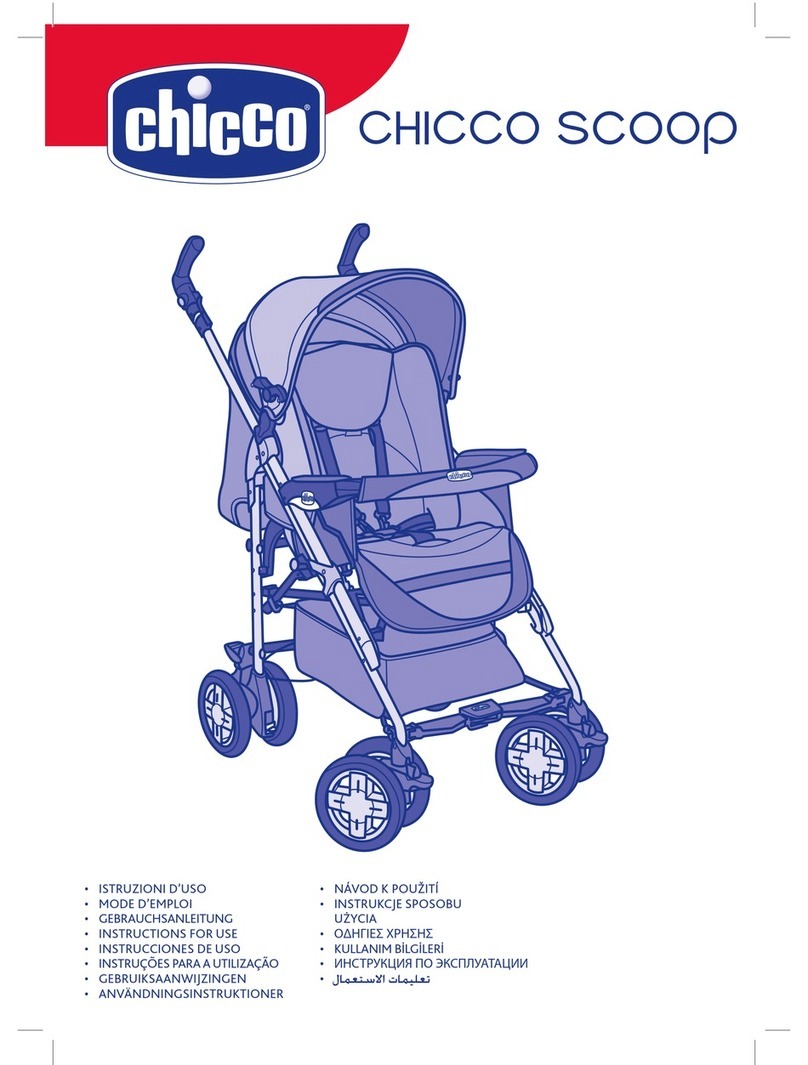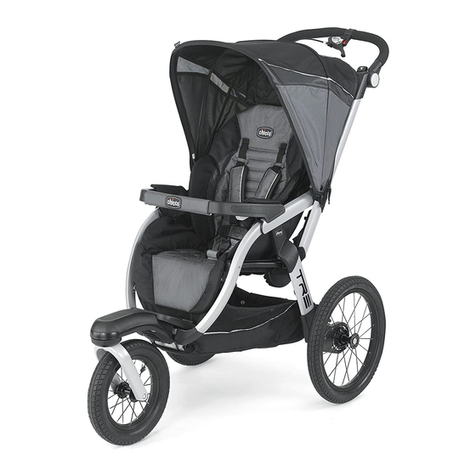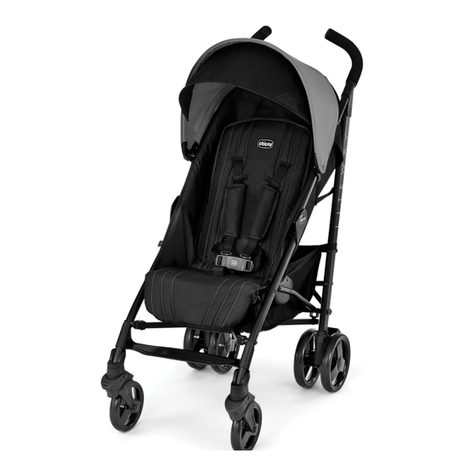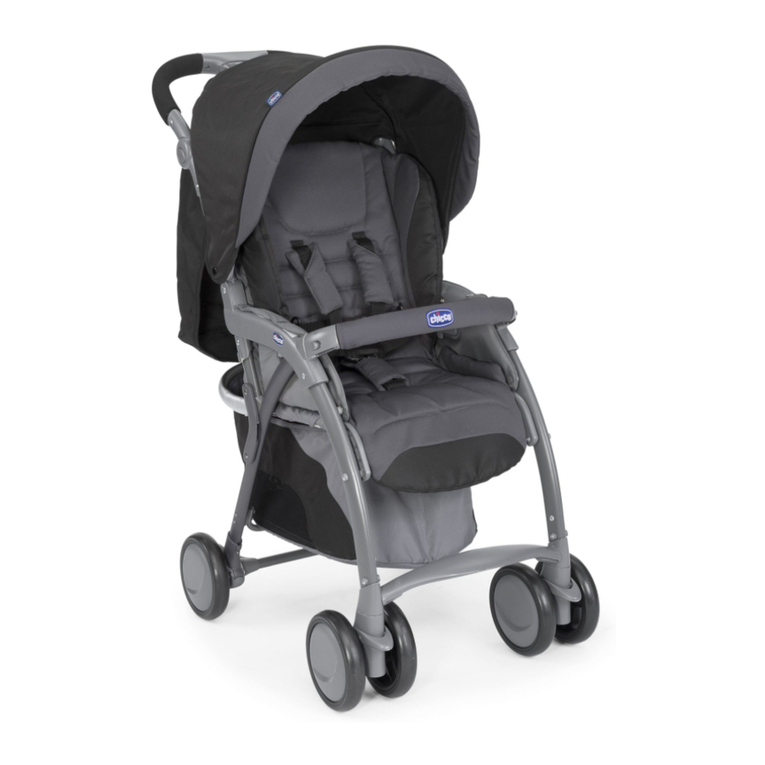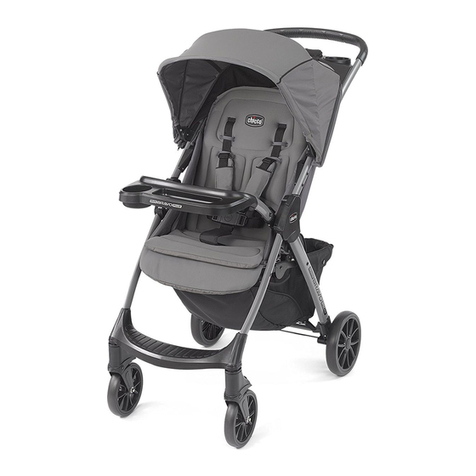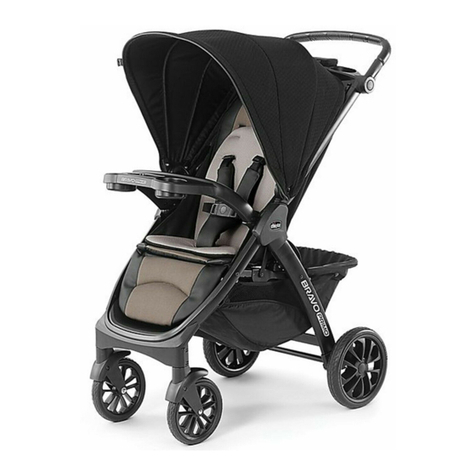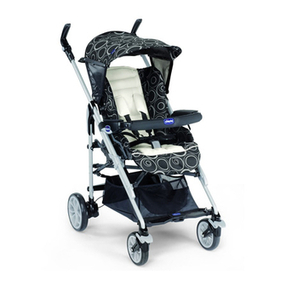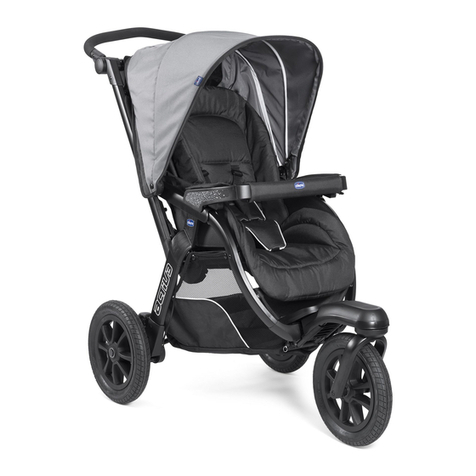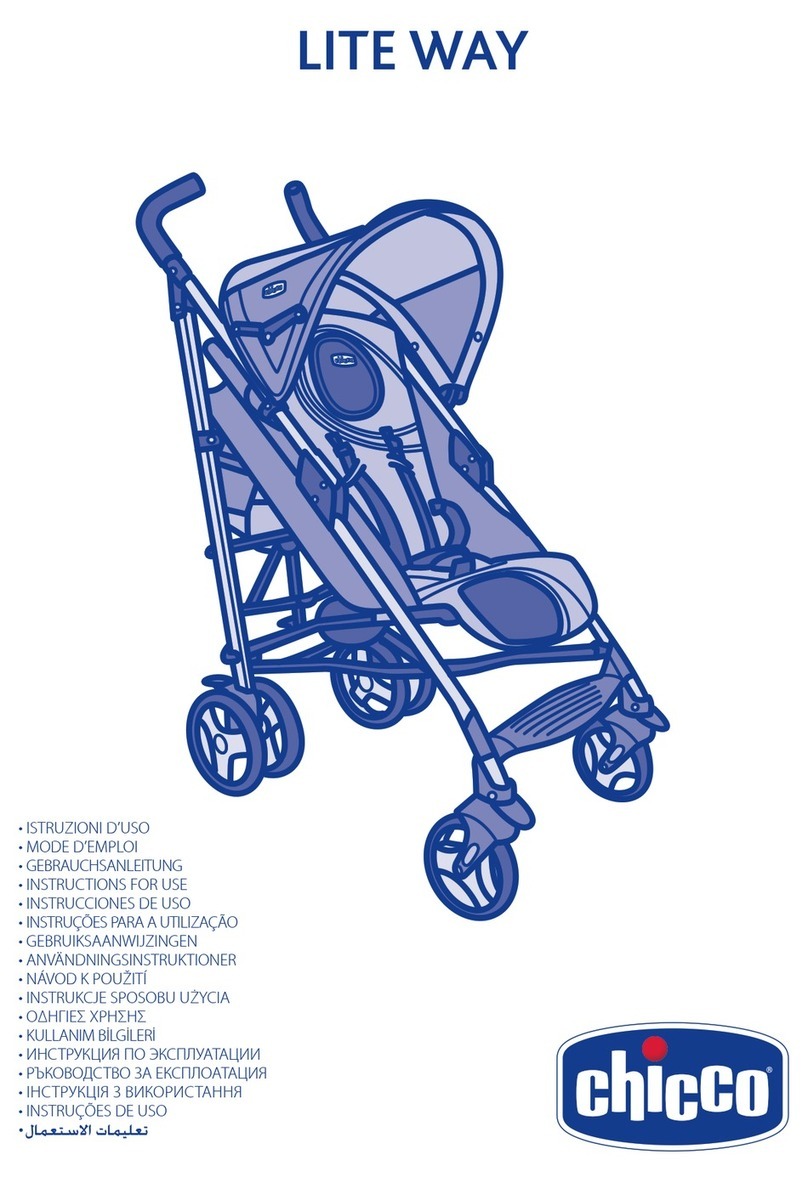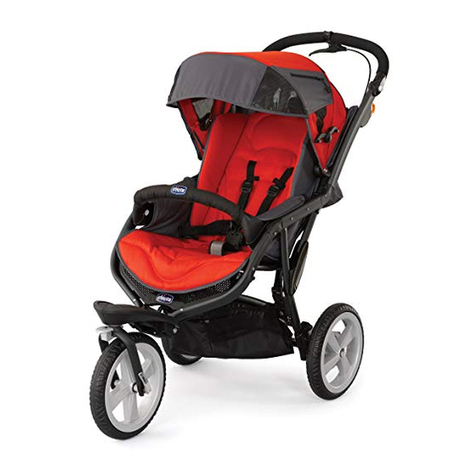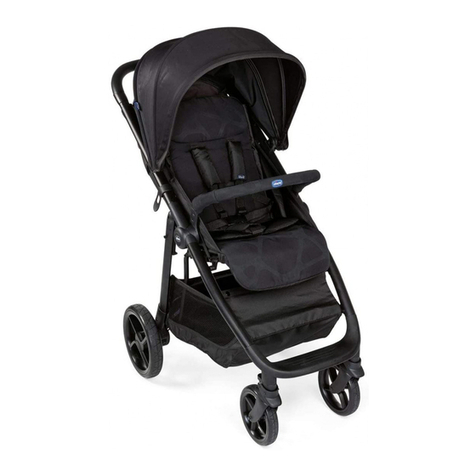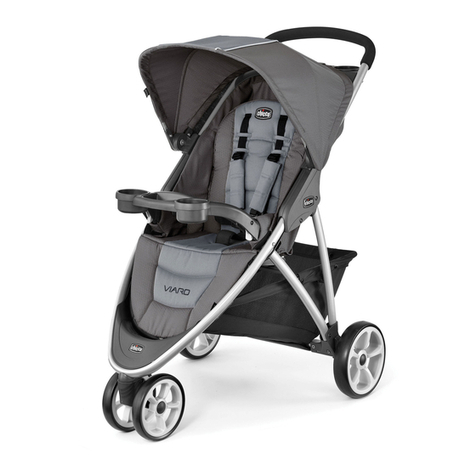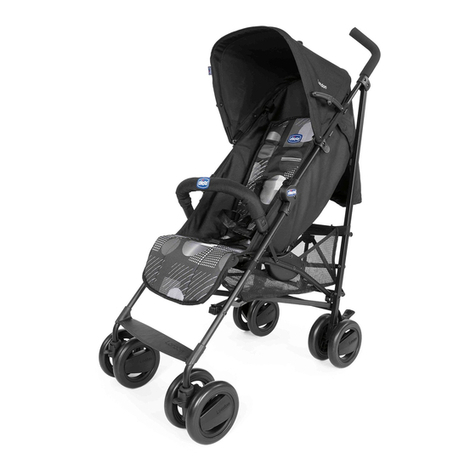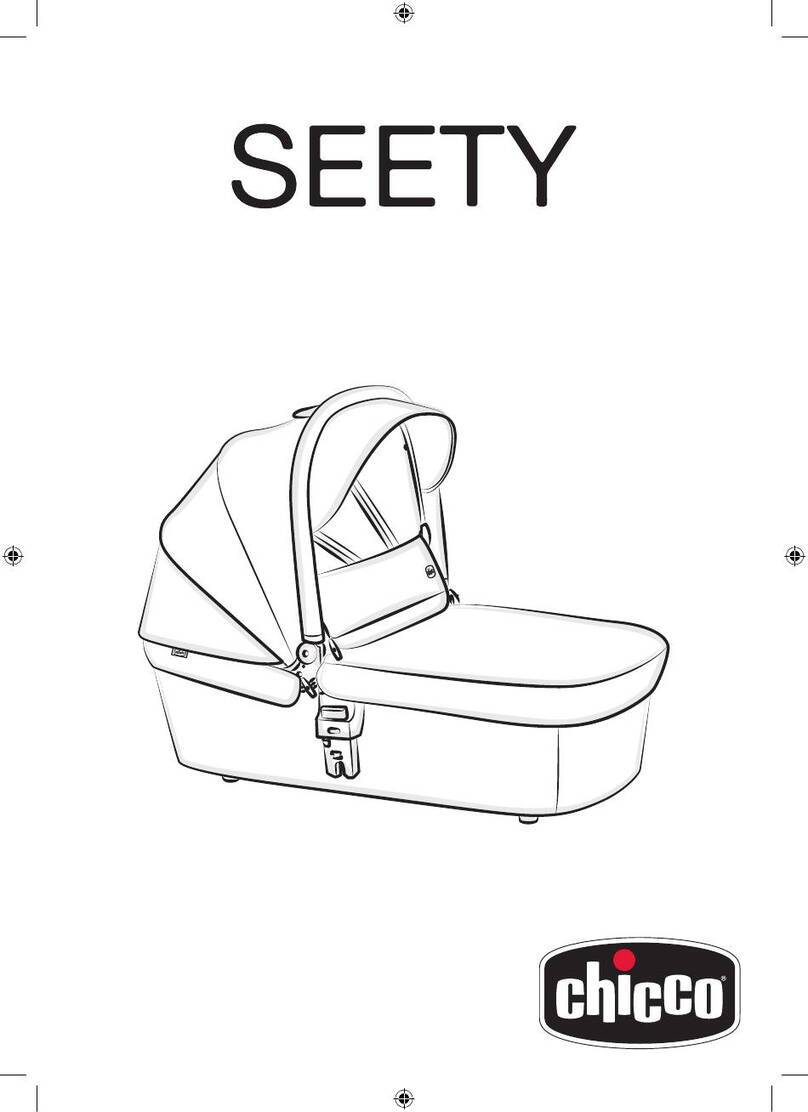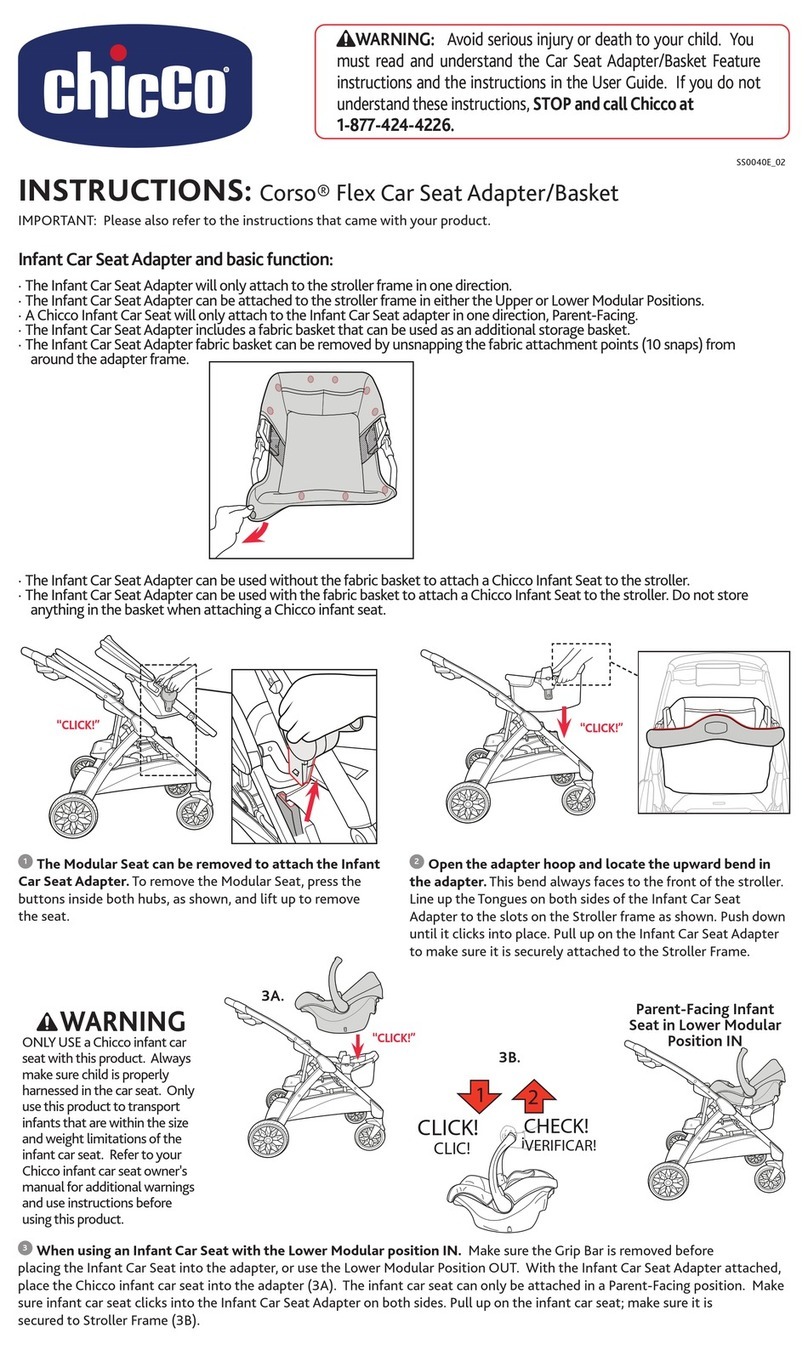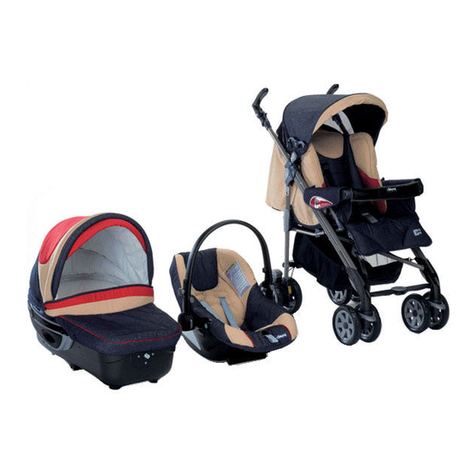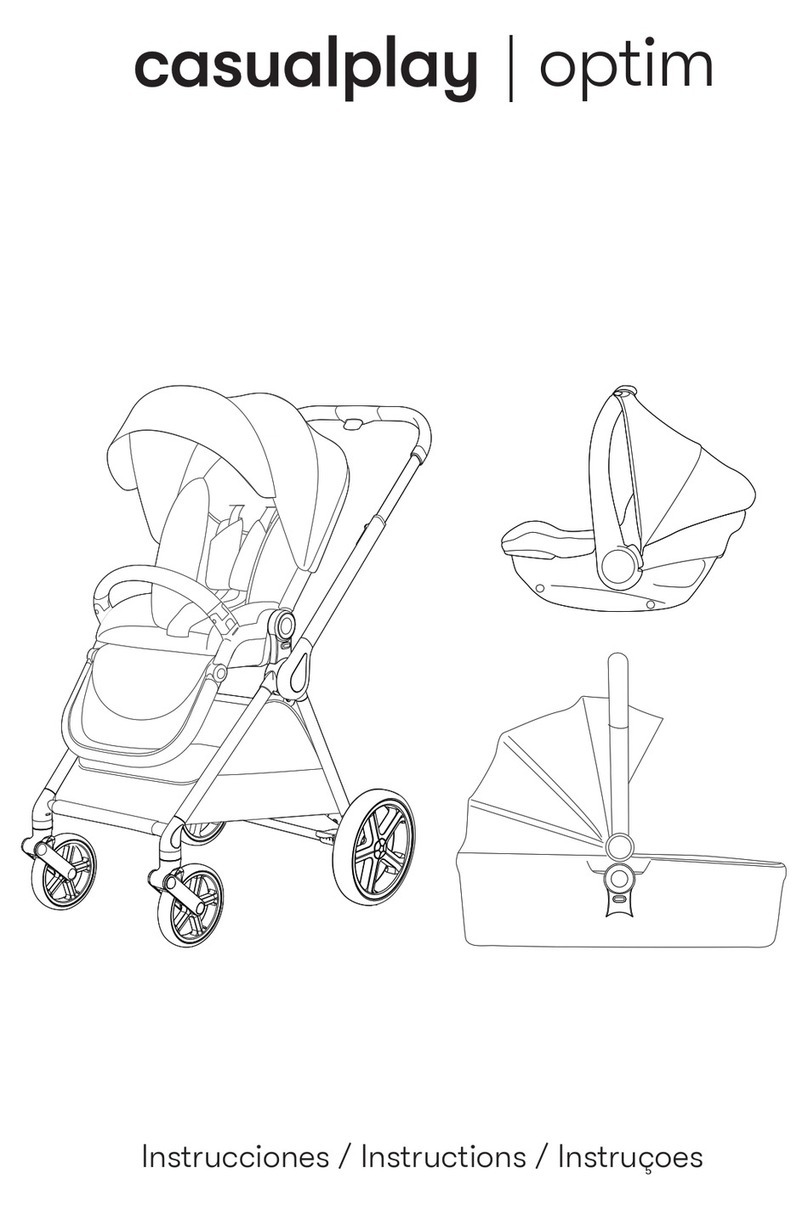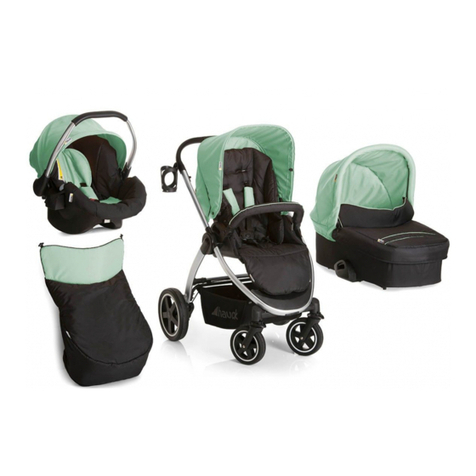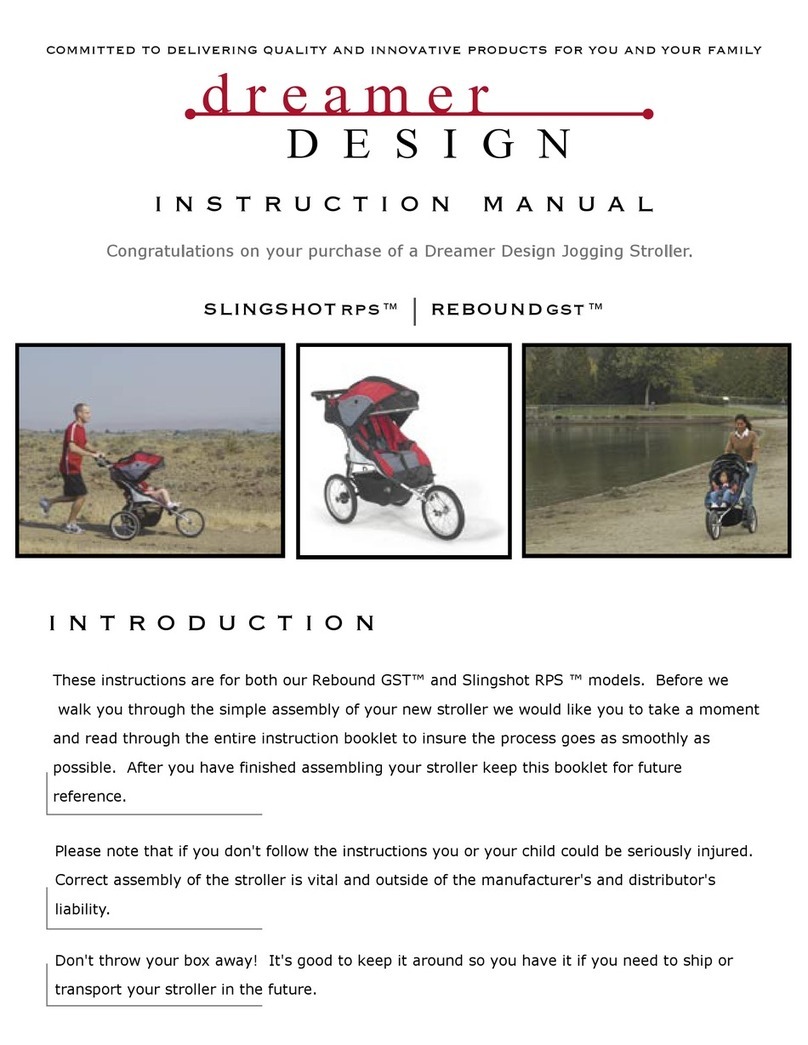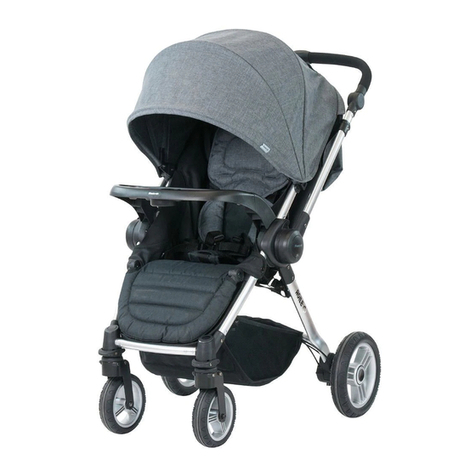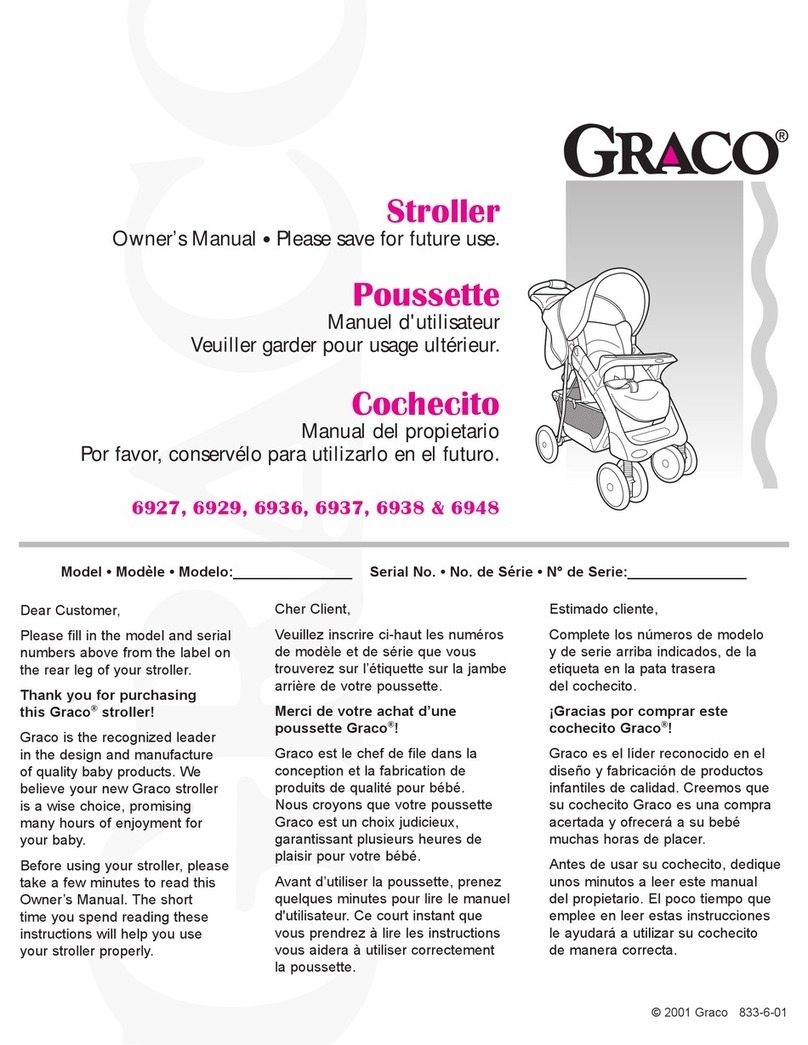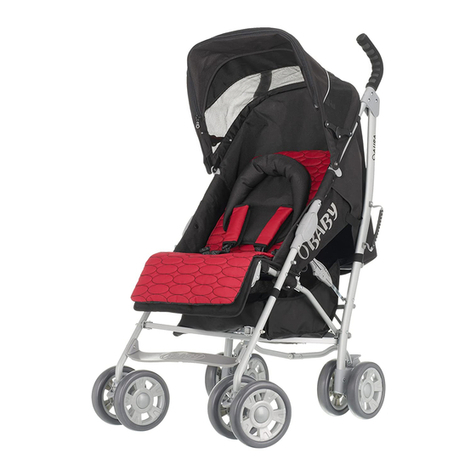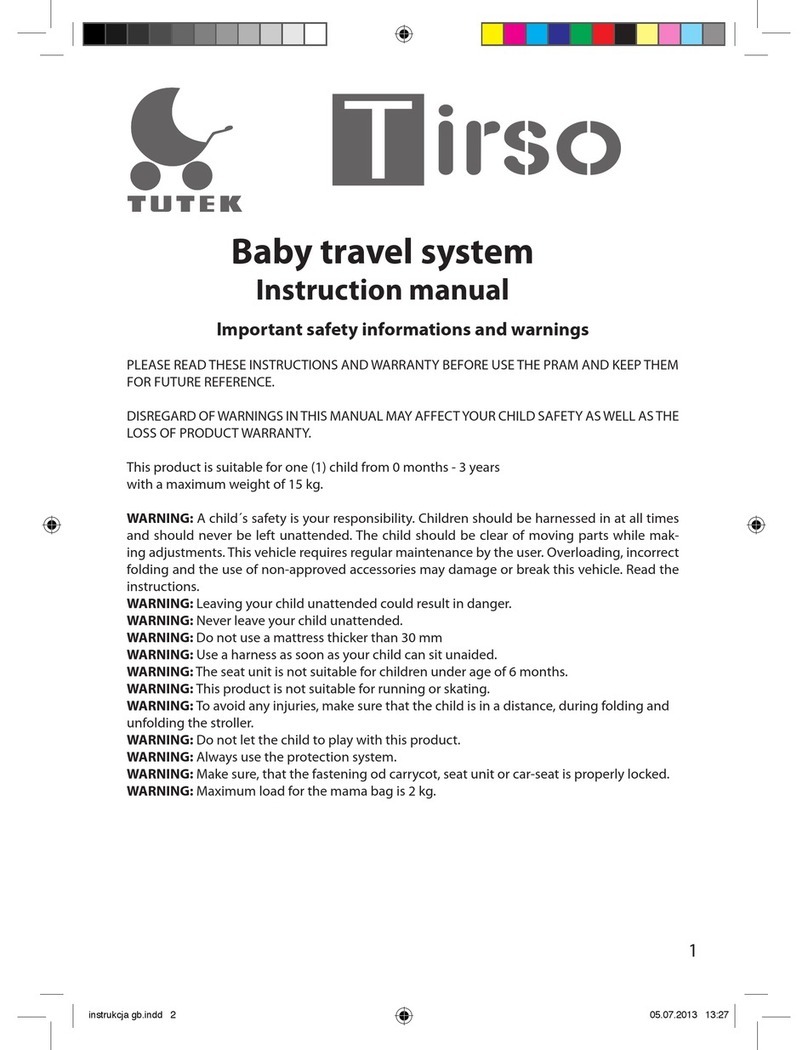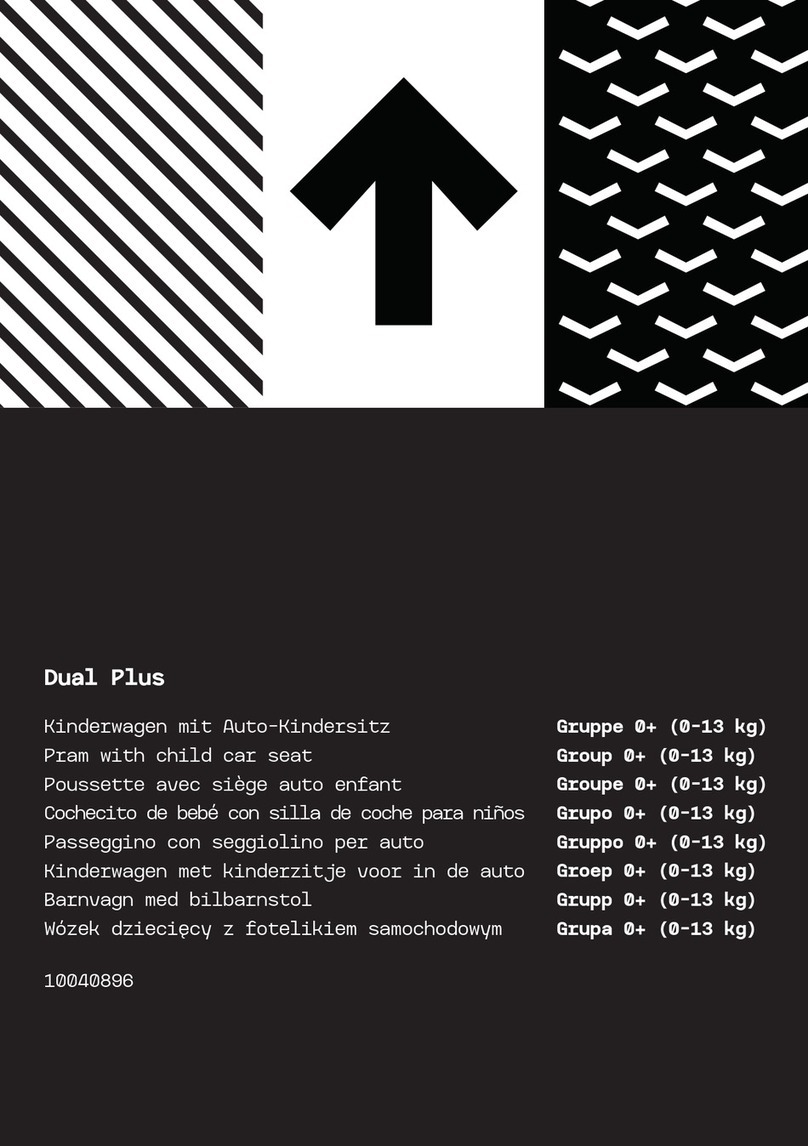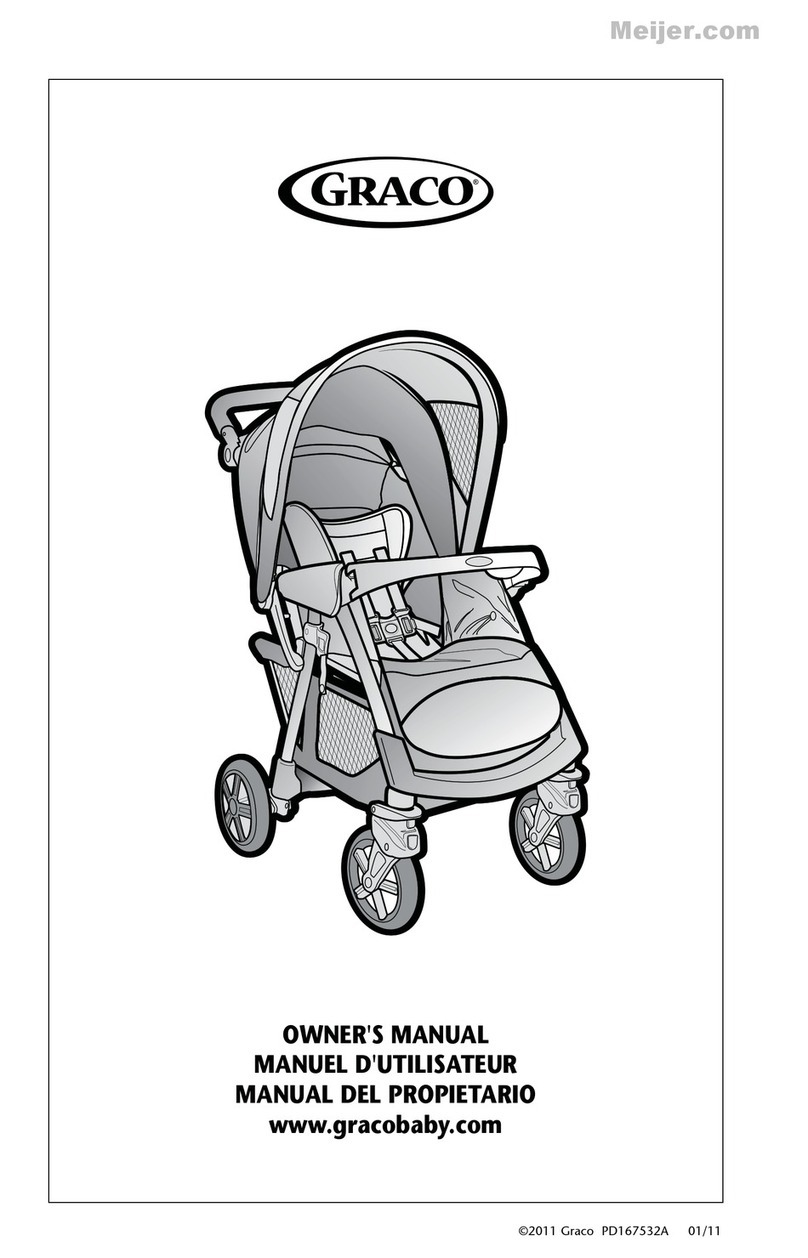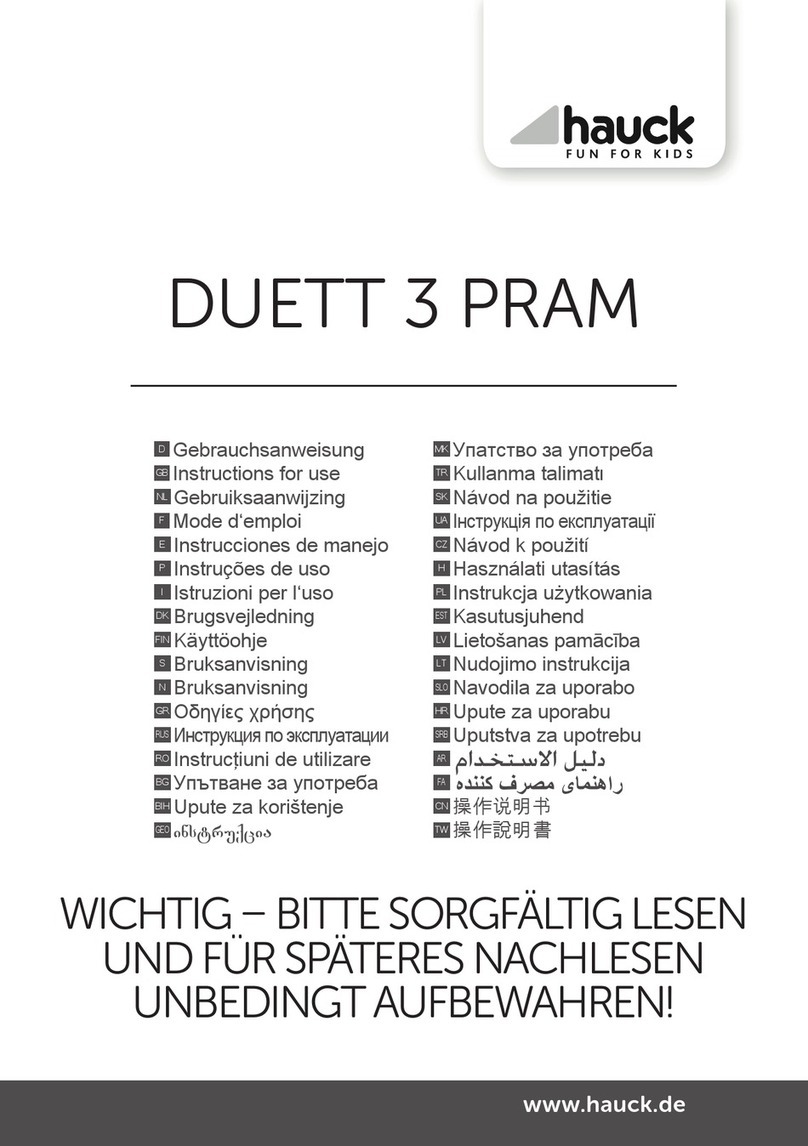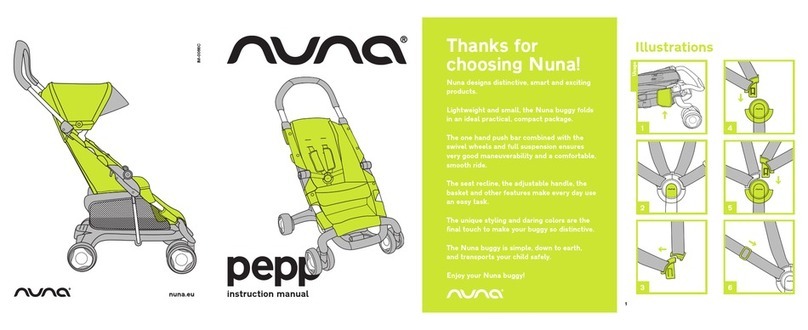
10
• Non applicare al passeggino ac-
cessori, parti di ricambio o compo-
nenti non fornite o approvate dal
costruttore.
• Non usare il prodotto se alcune par-
ti sono rotte, strappate o mancanti.
• Con il Seggiolino Auto installato
sul passeggino, questo veicolo non
sostituisce una culla o lettino. Se il
bambino necessita di dormire, al-
lora dovrebbe essere collocato in
una navicella, culla o lettino.
• Vericare prima dell’assemblaggio
che il prodotto e tutti i suoi com-
ponenti non presentino eventuali
danneggiamenti dovuti al traspor-
to, in tal caso il prodotto non deve
essere utilizzato e dovrà essere
tenuto lontano dalla portata dei
bambini.
• Nelle operazioni di regolazione, as-
sicurarsi che le parti mobili del pas-
seggino non vengano in contatto
con il corpo del bambino.
• Assicurarsi che gli utilizzatori del
passeggino siano a conoscenza
dell’esatto funzionamento dello
stesso.
• Questo prodotto deve essere utiliz-
zato esclusivamente da un adulto.
• Il prodotto deve essere assemblato
esclusivamente da un adulto.
• Per evitare rischi di strangolamento,
non dare al bambino e non riporre vici-
no al bambino oggetti muniti di corde.
• Non usare il passeggino sulle scale
o sulle scale mobili: si potrebbe per-
dere improvvisamente il controllo.
• Prestare attenzione quando si sale e
scende un gradino o il marciapiede.
• Se lasciate il passeggino esposto
al sole per molto tempo, aspettate
che si rareddi prima di mettervi il
bambino. L’esposizione prolungata
al sole può causare cambiamenti di
colore nei materiali e tessuti.
• Evitare il contatto del passeggino
con acqua salina per prevenire la
formazione di ruggine.
• Non utilizzare il passeggino in
spiaggia.
• Quando non in uso, il passeggino
va tenuto lontano dalla portata dei
bambini.
• ATTENZIONE: non utilizzare mai
l’impugnatura per sollevare il pas-
seggino con dentro il bambino.
• ATTENZIONE:: Il sistema di ritenu-
ta della sacca porta bambini deve
essere utilizzato solo ed esclusiva-
mente durante il trasporto in auto
del bambino.
• ATTENZIONE: Il sistema di ritenu-
ta della sacca porta bambini deve
essere rimosso o nascosto quando
il prodotto viene usato al di fuori
dell’autovettura.
CONSIGLI PER LA PULIZIA E LA MANUTENZIONE
Questo prodotto necessita di manutenzione periodica. Le ope-
razioni di pulizia e manutenzione devono essere eettuate da
un adulto.
PULIZIA
Il passeggino è sfoderabile (fare riferimento al capitolo “Vesti-
zione/svestizione seduta”). Per la pulizia delle parti tessili riferirsi
alle etichette di lavaggio. Di seguito sono riportati i simboli di
lavaggio ed i relativi signicati:
Lavare a mano in acqua fredda
Non candeggiare
Non asciugare meccanicamente
Non stirare
Non lavare a secco
Pulire le parti in plastica periodicamente con un panno umido,
non utilizzare solventi o prodotti abrasivi. Asciugare le parti in
metallo, dopo un eventuale contatto con acqua, al ne di evita-
re il formarsi di ruggine.
